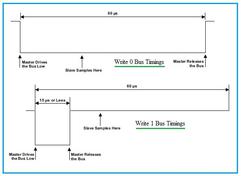Unipro Interface: Protocol and Advantages
Advertisement
This page covers the basics of the Unipro interface protocol and discusses its advantages.
Introduction:
MIPI Unipro is a chip-to-chip interfacing protocol used in mobile phones and other mobile electronic devices to establish high-speed connections. Unipro supports a network of up to 128 devices, including ICs, modules, and more. Essentially, Unipro (Unified Protocol) serves as a transport layer protocol.
What is Unipro Protocol?
The MIPI Alliance publishes the UNIPRO specifications, which include versions 1.4, 1.41, 1.6, 1.8, and 2.0. It’s often paired with M-PHY, adhering to specifications 2.0, 3.0, 4.1, and 5.0.
The Uniport stack sees use in a wide variety of applications. This includes UFS (Universal Flash Storage), developed by JEDEC for mass storage devices, Uniport-M (Unipro with M-PHY), Uniport-D (Unipro with D-PHY), CSI-3 (Camera Serial Interface-3), DSI-2 (Display Serial Interface-2), and GBT. UFS leverages Unipro as its link layer and M-PHY as its physical layer.
The target devices for Unipro, or Uniport-M, are commonly smartphones, digital cameras, tablets, and multimedia devices.

The following are features of the Unipro Interface developed by the MIPI Alliance:
- Supports multiple physical layers within a single network, working much like TCP/IP.
- Unipro v2.0 uses M-PHY HS-G5, boosting bandwidth up to 23.32 Gbps per lane and per direction.
- Payload length has been increased from 272 to 1144 in the Unipro L2 layer.
- Latency is reduced by up to 8 ms in V2.0 compared to the Unipro v1.8 specifications.
Benefits or Advantages of Unipro
Here are the benefits and advantages of using Unipro:
- Low Power Consumption: Achieved through the introduction of six power modes and hibernation.
- Flexible Routing: It offers flexibility in changing chip-to-chip lane routing based on traffic bandwidth (BW) and latency requirements. The number of lanes and the operational speed of those lanes can be dynamically scaled in Unipro.
- Enhanced QoS: Offers improved Quality of Service with the help of CPort arbitration and data link layer pre-emption.
- High-Speed Communication: When combined with the physical layer, Unipro offers high-speed data communication in gigabits per second, alongside low pin count, smaller silicon area, data reliability, and congestion management.
- Traffic Classes: Unipro supports various traffic classes, both in real-time and non-real-time.
- High Performance and Low EMI: Provides a solid combination of performance and reduced electromagnetic interference.
UniPro, along with other high-speed interfaces like USB and PCIe, are more expensive compared to lower-speed interconnects such as SPI, I2C, or CMOS.
Advertisement
 RF
RF



